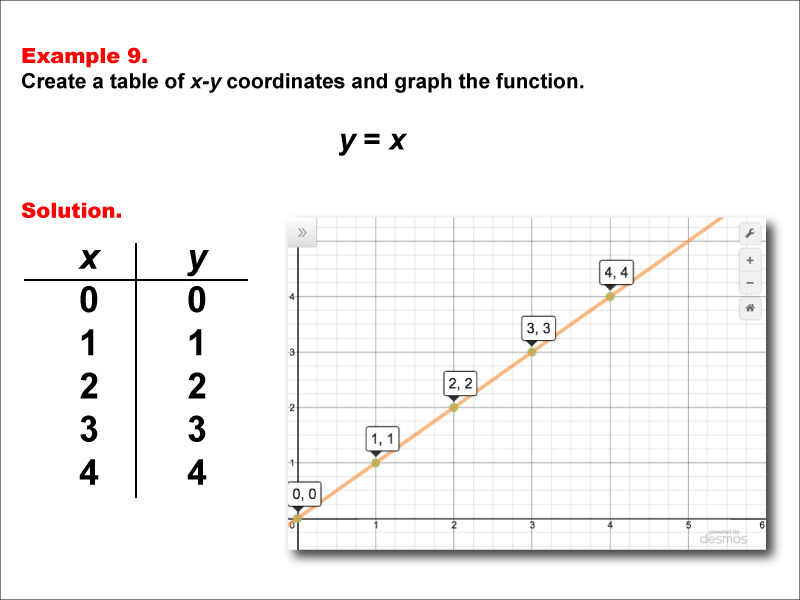
Display Title
Math Example--Linear Function Concepts--Linear Functions in Tabular and Graph Form: Example 9
Display Title
Math Example--Linear Function Concepts--Linear Functions in Tabular and Graph Form: Example 9

Topic
Linear Functions
Description
This example illustrates the process of creating a table of x-y coordinates and graphing the linear function y = x. The image presents both a graph and a table for this function. The table includes coordinate pairs (0, 0), (1, 1), (2, 2), (3, 3), and (4, 4), showing how the y-value increases by 1 for each unit increase in x.
Linear functions are essential in algebra as they represent relationships with a constant rate of change between variables. This collection of examples aids in teaching this topic by providing visual representations of various linear functions, enabling students to observe how changes in the equation affect both the graph and the table of values.
Exposing students to multiple worked-out examples is vital for a comprehensive understanding of linear functions. By examining different slopes, including the special case of a slope of 1 and a y-intercept of 0, students can develop a deeper insight into how these components influence the function's behavior.
Teacher's Script: Now, let's look at the function y = x. What's special about this function? Notice how the y-value is always equal to the x-value. This gives us a line that passes through the origin and forms a 45-degree angle with the x-axis. How does this compare to our previous examples with different slopes and y-intercepts?
For a complete collection of math examples related to Linear Functions click on this link: Math Examples: Linear Functions in Tabular and Graph Form Collection.
| Common Core Standards | CCSS.MATH.CONTENT.6.EE.C.9, CCSS.MATH.CONTENT.8.F.A.3 |
|---|---|
| Grade Range | 6 - 8 |
| Curriculum Nodes |
Algebra • Linear Functions and Equations • Graphs of Linear Functions |
| Copyright Year | 2015 |
| Keywords | function, linear functions, graphs of linear functions, function tables |